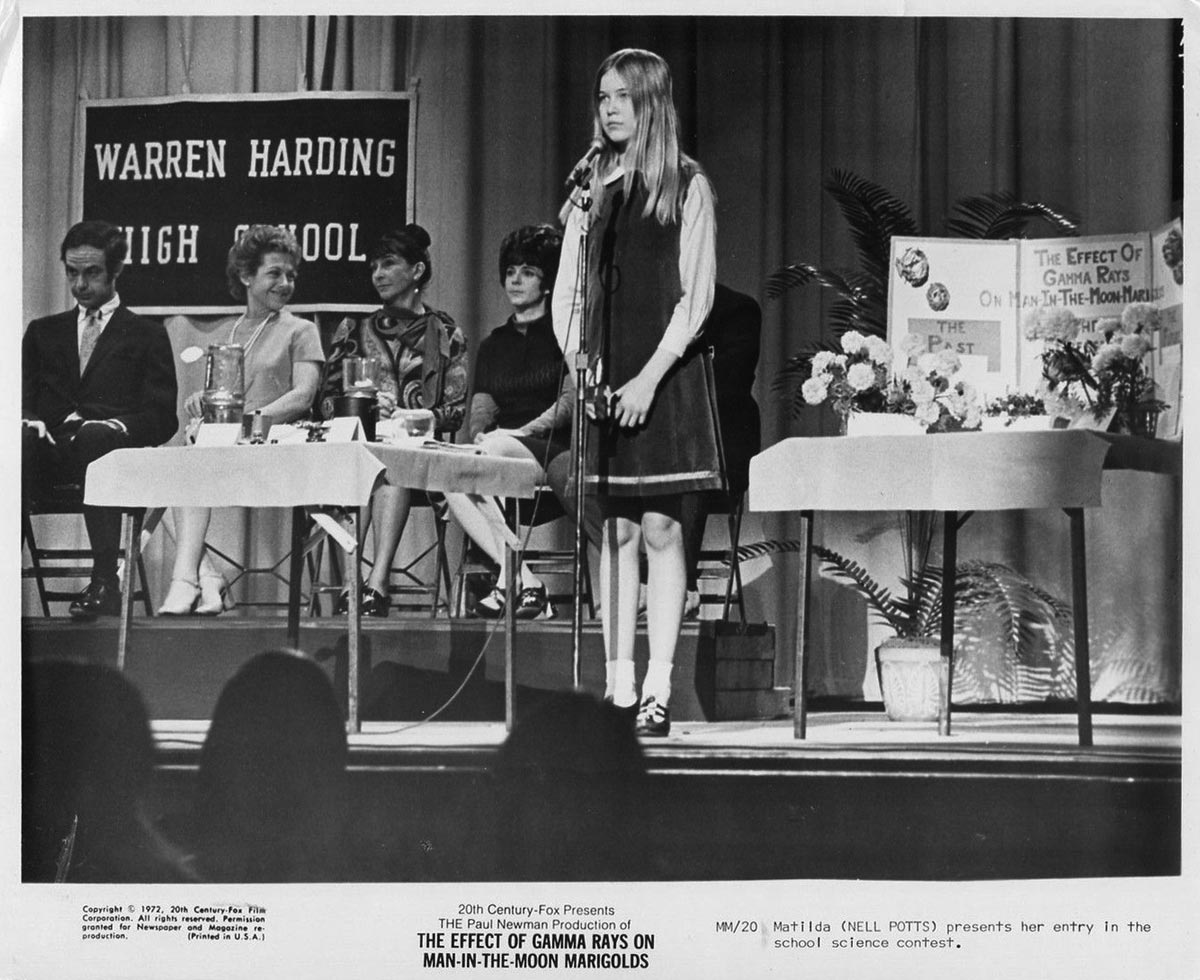Paul Newman. That name should send shivers down your spine and quite possibly other parts of your anatomy. The New Beverly is having an incredible mini-festival of his directorial work this month and it would be a damn shame if you weren’t there. Have you seen the work that he’s directed? Did you know that he was not only in front of the camera but behind it as well? Paul Newman was far more than an actor, race car driver or salad dressing entrepreneur. The collection of films that make up Paul Newman’s directorial oeuvre are extraordinary in a way that other films are not. Each one reflects the way in which he saw the world and the people in it: with sensitivity, complexity and genuine human dignity. These are films that remain important today due to their challenging material and the ways in which they are expressed. While we have recognized many other actors as directors, it is unfortunate that we have not taken the time to appreciate Newman. Let’s correct that mistake this month and give credit where credit is due. Each one of the films the New Bev is showing this month – The Effect of Gamma Rays on Man-in-the-Moon Marigolds (1972), Sometimes a Great Notion (1970) (playing on July 16 & 17), Rachel, Rachel (1968) and The Glass Menagerie (1987) (playing on July 23rd & 24th) – are haunting and strong works, cinema that was great when it was first released and great today. While Paul may be best known for acting in The Hustler (Robert Rossen, 1961), Cool Hand Luke (Stuart Rosenberg, 1967), or Butch Cassidy and the Sundance Kid (George Roy Hill, 1969), there is ample time to explore the rest of his career.
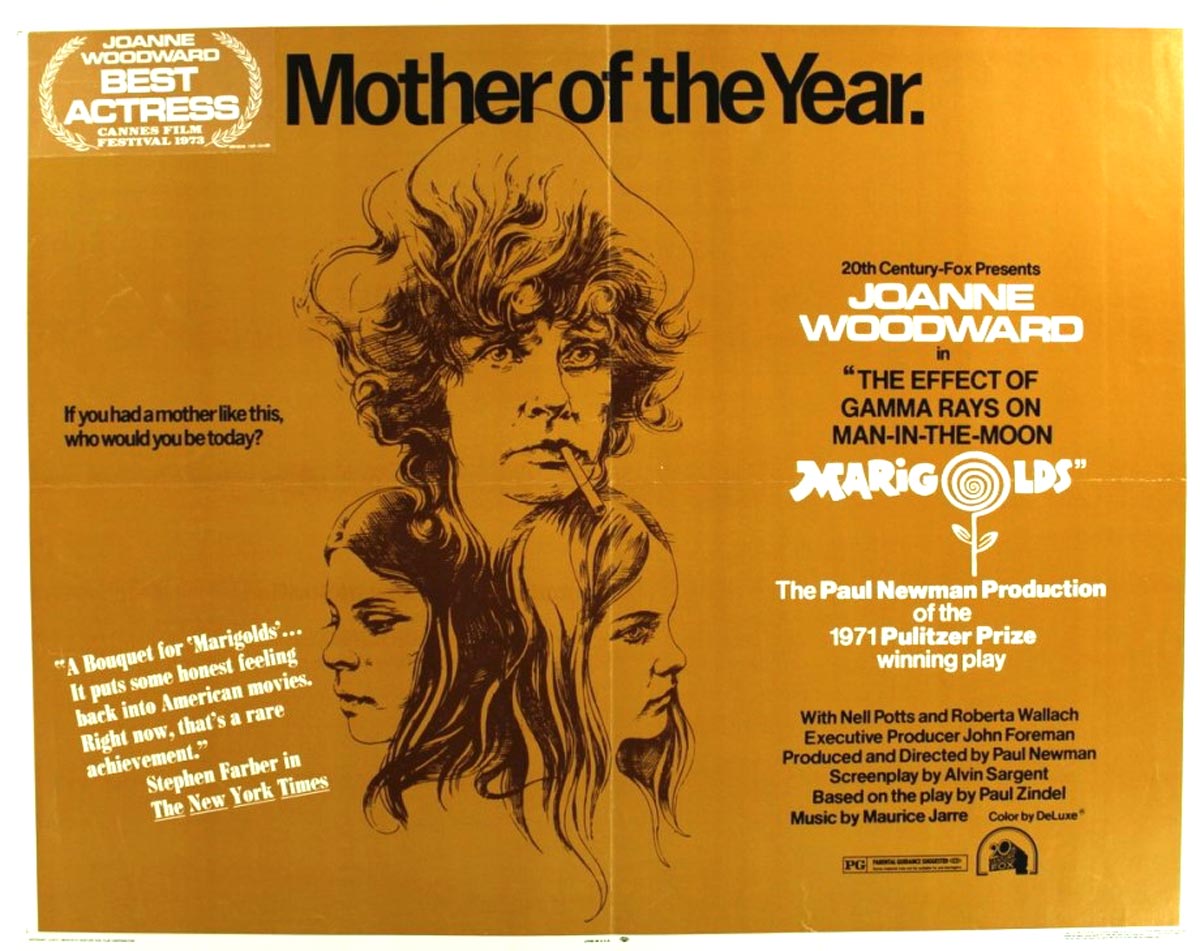
If there is one rarity that I advise you to take a chance on this month, please let it be The Effect of Gamma Rays on Man-in-the-Moon Marigolds (1972). I know- the name is unwieldy. But this film is the real deal. Not on DVD, this work is rarely (if ever) screened and it’s one of the most emotionally brutal but brilliant pieces of cinema I’ve ever come across. I had a particular desire to write about this film this month because the author of the play, Paul Zindel, had a big literary impact on my youth. While Zindel later became a teacher and dabbled in screenwriting, his young adult novels remain things of beauty. Works like My Darling, My Hamburger (1969), Confessions of a Teenage Baboon (1977), and Pardon Me, You’re Stepping on My Eyeball (1976) are among Zindel’s “greatest YA hits.” If you think the titles are great, wait until you meet the characters. Paul Newman and wife Joanne Woodward recognized Zindel’s brilliance after seeing a stage performance of his Pulitzer Prize winning The Effect of Gamma Rays on Man-in-the-Moon Marigolds. They subsequently bought the film rights and adapted it to the screen a few years later.
What Paul Newman and screenwriter Alvin Sergeant did with Paul Zindel’s autobiographical play is imaginative, respectful and creative. It maintains the play’s narrative integrity while allowing it to gain additional power through enriched character development. The Effect of Gamma Rays on Man-in-the-Moon Marigolds is a highly powerful film about being a daughter, a sister, a mother and a woman. Zindel’s father deserted the family when he was quite young, leaving his sister and himself to be raised by their mother. Zindel used this and other minor familial details for the play’s narrative. As he wrote in the foreword to the 1997 anniversary edition of the play, “I sketched a speck of myself into Marigolds, changing my sex to become the fictional, life-affirming Tillie. And the lesson I learned by writing the play with thoughtfulness, honesty, amazement and terror was that youth is resilient in the clutch of darkness.” This story of Beatrice, Matilda/Tillie and Ruth Hunsdorfer is just about as dark as you can get without plunging straight into the abyss never to return.
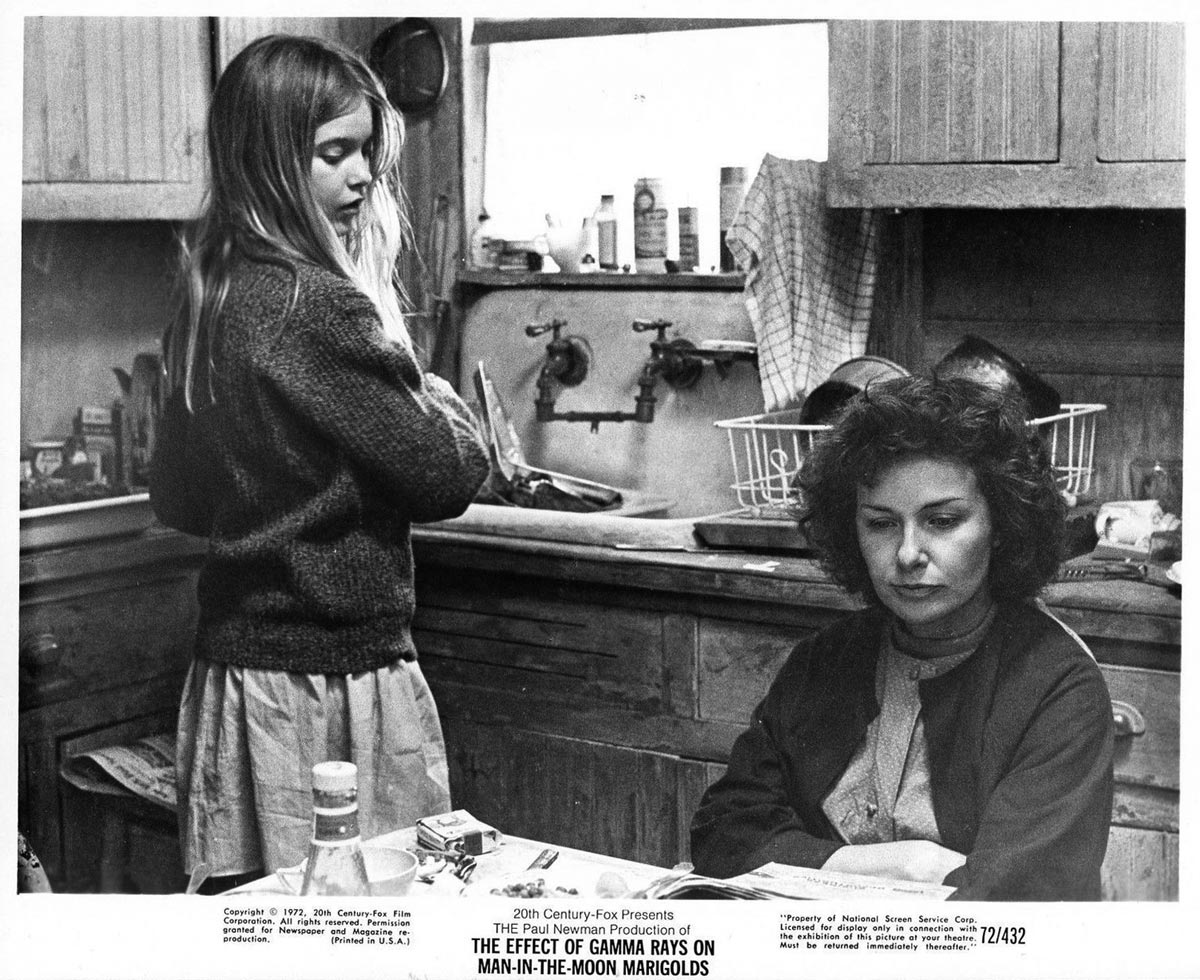
The play is considerably harsher than the film. Its text may be accompanied by wonderful illustrations by Dong Kingman, but they in no way preclude the ferocious manner in which Beatrice speaks to her daughters. Ruth and Tillie’s interactions and their engagements with their mother are on a spectrum of human fragility and madness comparable only with other playwrights such as Edward Albee or Tennessee Williams. It is fitting that Paul Newman selected Williams’ Glass Menagerie a few years later to adapt to film. For these kinds of dramas, the audience is held captive and captivated. The depiction of the internal combustion of the Hunsdorfer family unit in Zindel’s work is catastrophic, devastating and, in the end, hopeful.
We should examine the ways in which the film and the play differ, and why they are equally important. Do not read this as a “one is better than the other” statement. In fact, this look at text-adaptation is 100% non-binary. The idea that the book has to be better than the movie or that one media work must be better than another is total bullshit. Once you can learn that, you can enjoy many more things in life. It’s a big bright world out there with many good things in it deserving of love and appreciation. Yes, Virginia, you can like all the things the same amount at the same time. Your head won’t go Scanners on you. Promise.
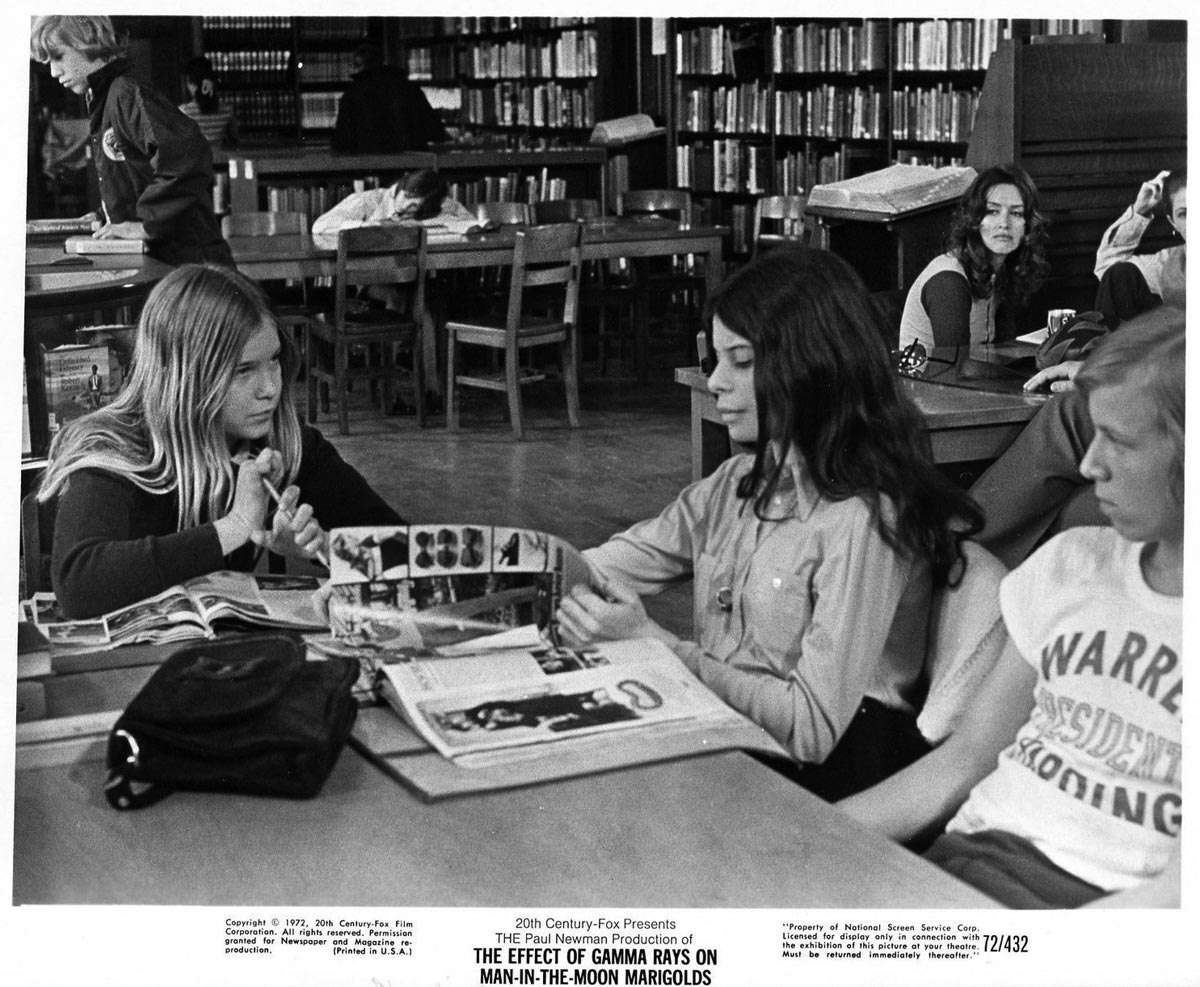
In talking about adaptations, there is something that I call the “cinematic cover song” theory. I have used it while discussing Guillermo del Toro’s Hellboy (2004), but could easily apply it to films like Nicholas Ray’s In a Lonely Place (1950), Danny Boyle’s Trainspotting (1996) and now The Effect of Gamma Rays on Man-in-the-Moon Marigolds (1972). It looks at film adaptations of literary works and gauges whether or not they have met “killer cover song” criteria. Music critic David Shultz writes, “The secret to a good cover song is to not imitate or replicate the original. Whenever an artist attempts that, the result is usually a tepid copy of an already established tune. A good cover song comes from using the original as a framework and investing it with that singer’s set of unique strengths. The goal should be to interpret and re-invent, not slavishly reproduce.” The cover song is at its best when it maintains the spirit of and the basic integrity of the original while adding its own individualistic flair; setting it apart from the original while still harkening back to it. Paul Newman’s adaptation of Paul Zindel’s play certainly does this and in a wholly new manner. Newman’s interpretation is as complex as Zindel’s originating work, making it desirable to have the play as an accompanying text.
Zindel’s theatrical work showcases Matilda/Tillie as the main character of the narrative, while Newman’s film concentrates most of its energy on the mother Beatrice Hunsdorfer. This shift is fascinating and crucially important in evaluating the manner in which these two media formats are consumed, not to mention their divergent audiences. Both the film and play give Beatrice Hunsdorfer the “front and center” part, dialogue-wise, but only the film allows her any sympathy. It would take a helluva actress to dredge a sympathetic performance from the dialogue Zindel wrote for the mother in that play! But who knows? The slew of talented women who played Beatrice might have been able to do it. Over the years, brilliant women like Sada Thompson, Shelley Winters, Joan Blondell, and Eileen Heckart all “did” Beatrice.
Reviews of the play from that time give us some perspective on how Beatrice was perceived. One positive one from the Harvard Crimson written by Frank Rich (yes, THAT Frank Rich) noted, “COULD there possibly be room in our lives for yet one more well-made American play about a middle-aged bitch? My God, I’m here to tell you that I think there is.” Even the July 4th, 1970 Life magazine theater review of Sada Thompson’s Beatrice couldn’t hold back from the “bitch” comment. They write, “Such a catalog of bitchiness approaches caricature but Miss Thompson and Zindel keep the role not only believable but funny and fascinating.” Each of these was reviews that liked the play. Enjoyed the work. And Life’s review was far more forgiving, saying that Beatrice was not totally horrible. Yet they couldn’t help but call Beatrice Hunsdorfer a bitch or comment on her bitchiness. But was she actually bitchy in the play? Is she actually a bitch? Or is this part of 1970s US culture revealing itself, showing how uncomfortable we actually were with naked and horrible familial situations? Much like Who’s Afraid of Virginia Woolf? Gamma Rays is no walk in the park. And even worse – it involves children. But when these theater critics put on their Theater Critic Hat and said: “OMG, She’s Such A Bitch!” about the Beatrice Hunsdorfer character, was that misogyny, lazy criticism or just not wanting to look at Zindel’s deeply layered and horribly sad character built into this excellently written and disturbing drama?
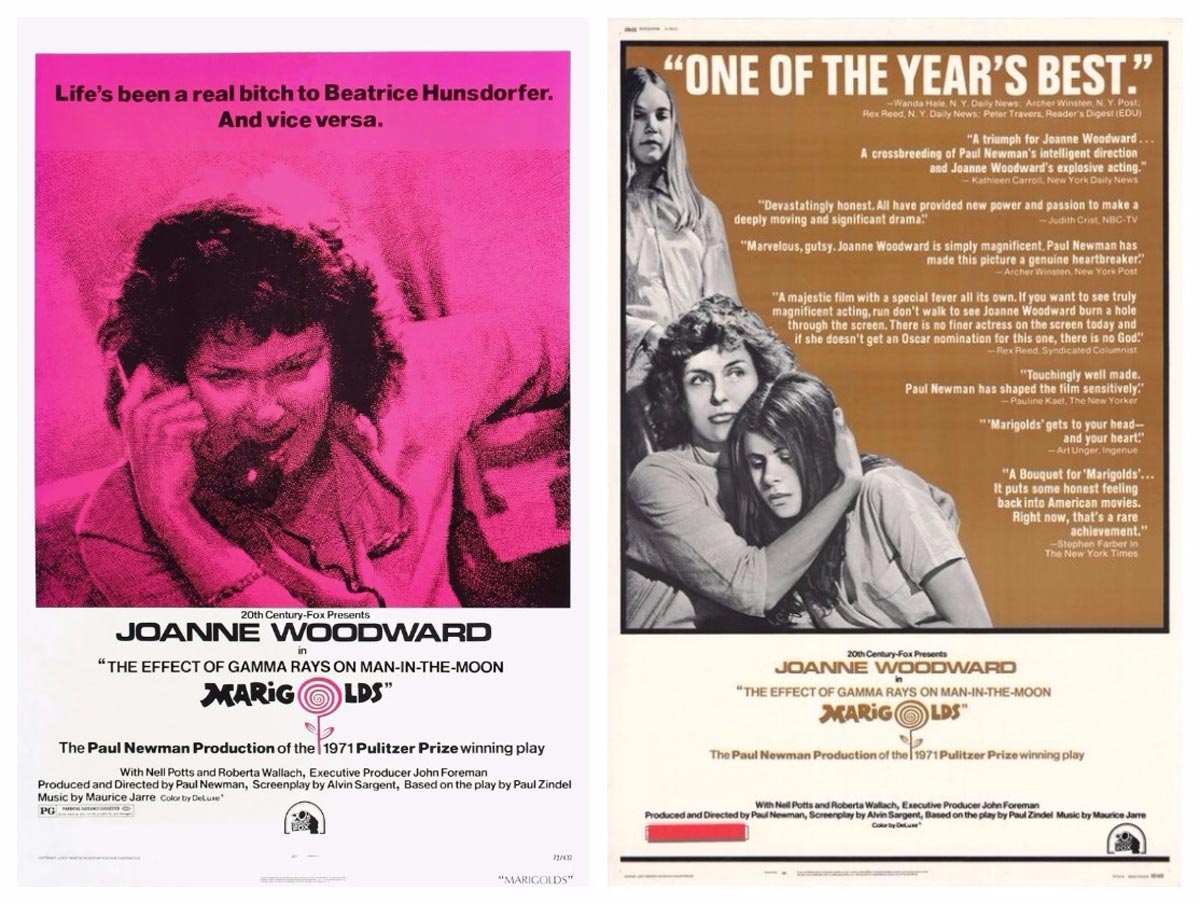
So then let’s take this term “bitch” and look at the film. Because, lo and behold, look at one of the posters for the film – it uses the word in the slogan: “Life’s Been a Real Bitch to Beatrice Hunsdorfer – and Vice Versa!” It’s a beautifully designed poster, in shocking pink, with a picture of Joanne Woodward as Beatrice Hunsdorfer, a phone in her hand, held to her ear, seeming to be in some kind of rage with someone on the other end of the line. It certainly gets you to pay attention. Another poster for the film, colored in muted browns and vanilla tones, depicts Beatrice, Ruth and Tillie sketched in a triangular formation, their hair blending together as though they were all somehow part of Beatrice, whose head is on top. Beatrice, the largest head, is the only one facing outwards, a cigarette in her mouth, eyes wide and frightened. The poster reads, in large letters “MOTHER OF THE YEAR” and in smaller letters, “If you had a mother like this, who would you be today?”
These two posters and their disparate approaches to the film are problematic. One is clearly on board with the bitch approach (which, incidentally, doesn’t fit with the film’s content), while the other seems to actually reflect the goals of the complicated narrative and rich characters inside the film. While it is still not unusual for a film to make a poster that is flashier than its contents or uses a bit of exploitation in order to bring in a wider audience, let us briefly examine the use of the term “bitch” and its oversimplification for Beatrice Hunsdorfer.
While hindsight is 20/20, some modern re-examination of films can give us a better appreciation and enjoyment of them. In the case of The Effect of Gamma Rays on Man-in-the-Moon Marigolds, this interpretation of Beatrice as a bitch is 100% inaccurate; she is simply mentally ill and suffering greatly. Of course, this is causing her daughters a great deal of torment, but she is not doing it out of any “bitchiness.” Mental illness, especially in women, especially in single mothers, was not something that we knew much about in the 1970s. So, of course, Beatrice’s oddball behavior was attributed to something, anything, else. She was a “bitch” because… no one could understand why anyone would talk to or treat her children in such a miserable fashion. But that term is usually reserved for malicious intent and Beatrice Hunsdorfer was far too self-absorbed to be malicious. Paul Newman’s direction and Joanne Woodward’s performance in the film rescue Zindel’s Beatrice superhero-style, allowing the film’s audience to feel sympathy and perhaps even empathy for her. This is a big departure from the play: where one cannot identify with Beatrice in those pages, one grieves for her sanity and her loss of stability in Newman’s work. It is a true tragedy.
The Effect of Gamma Rays on Man-in-the-Moon Marigolds on film remained just as heart breaking, but nowhere near as savage as the theatrical work. Its cast assisted greatly in making these performances “pop” and the story come alive. Playing Matilda/Tillie Hunsdorfer was Nell Potts, the real-life daughter of the film’s director and producer, Paul Newman. Playing Beatrice Hunsdorfer was Joanne Woodward, Paul Newman’s wife of many years. Ruth Hunsdorfer, Tillie’s sister, was none other than Roberta Wallach, great character actor Eli Wallach’s daughter.
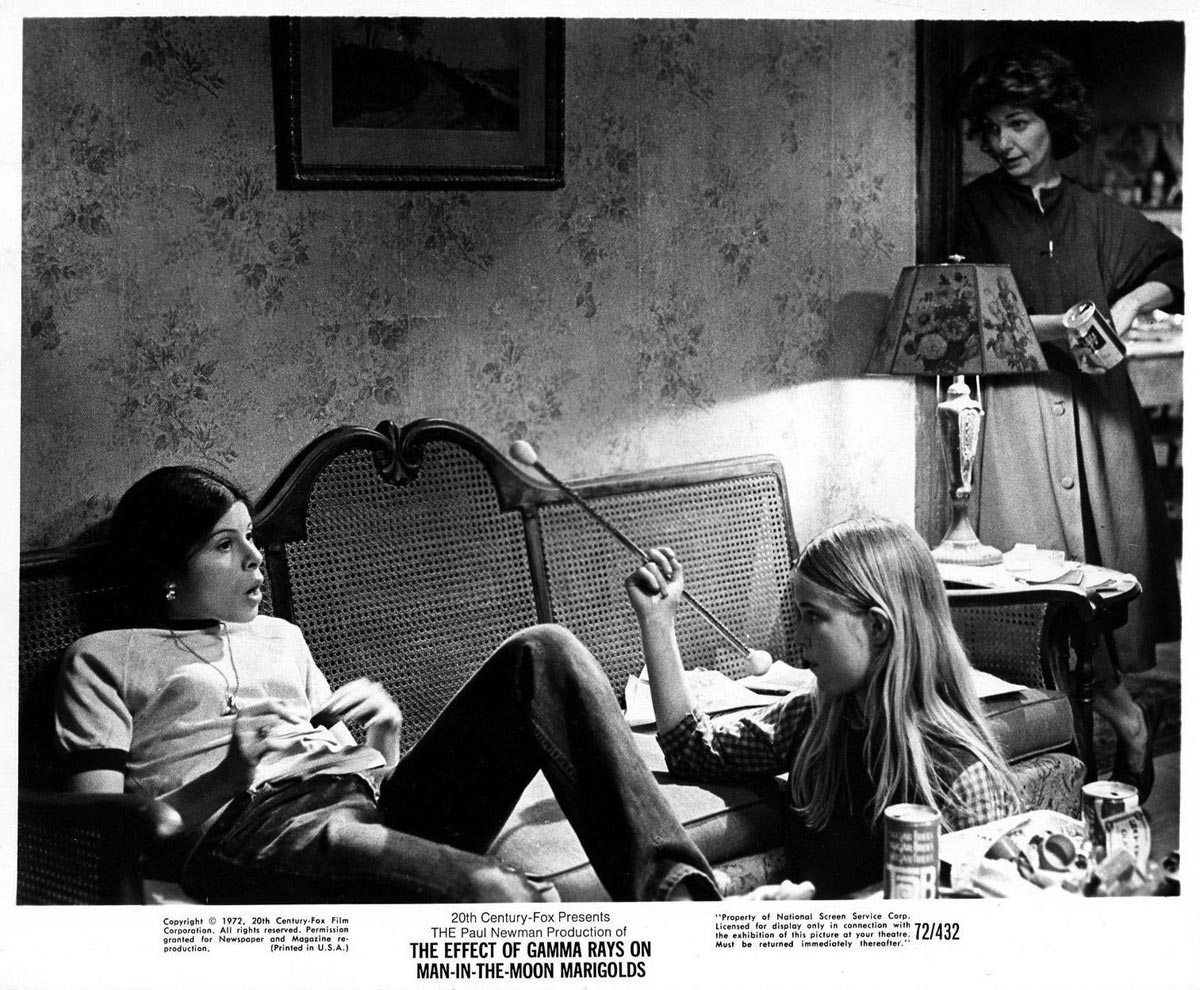
Widely recognized as having an idyllic marriage, Joanne Woodward commented after the production that making The Effect of Gamma Rays on Man-in-the-Moon Marigolds almost ruined her relationship with Newman. While the couple lived quite near where the film was shot in Connecticut, Woodward found herself periodically unable to cope with the character she was playing and had to go to the apartment the family had in NYC to escape. The emotional shockwaves she experienced as a result of playing Beatrice Hunsdorfer were horrible. In one account she gave, she said simply, “I was so depressed and suicidal during that film I couldn’t stand it. I hated the way I looked, I hated that character, what she did to her children.”
Woodward became Beatrice. The more she played her the more she was her. Beatrice Hunsdorfer, the angry, depressed, unstable, anxious woman…not too far from what Woodward was starting to feel herself. The performance she gave was outstanding but perhaps a little too real. It became hard for Woodward to retrieve herself from the character. This terrifying part of the production history shows just how close the film comes to reflecting the experience of a woman in Beatrice’s position. It may be just a movie, but it’s a rather harrowing depiction of femininity and mental illness.
As the film progresses, we watch as Ruth Hunsdorfer (Roberta Wallach), the epileptic older teen does become that bitch we’ve been talking about. Ruth is babied by Beatrice and somewhat favorited by her. When she has seizures, it is Beatrice who comforts her daughter gently and is a good mother. This doesn’t seem to matter to the elder child. Ruth knows how and where to hurt Beatrice most. And she’s not afraid to do it. Ruth’s ability to emotionally damage her already damaged mother is impressive; she does so with a vengeance that should make you shudder. Mental stability was clearly not on sale the last time the Hunsdorfer family went to the grocery store.
The Effect of Gamma Rays on Man-in-the-Moon Marigolds is ultimately about not succumbing to hopelessness and misery. While Ruth and Beatrice show us brokenness and pain, it is Matilda/Tillie (Nell Potts) whose scientific gaze allows her the objectivity needed to keep her head above water. Matilda wins, no matter what/who is put in her path – family drama, economic hardship, emotional abuse. Tillie’s clear-headed optimism and calm engagement with the wild chaos of the Hunsdorfer household reveals an understanding of the world beyond her years. The youngest of the three Hunsdorfer women gives us hope and emanates courage, letting us know that even if the other two never make it beyond the walls of that house that exudes death and madness, Tillie will at least make it. That, friends, is a small miracle.
